Castle on the Square
The mini-citadel which once faced Union Square.
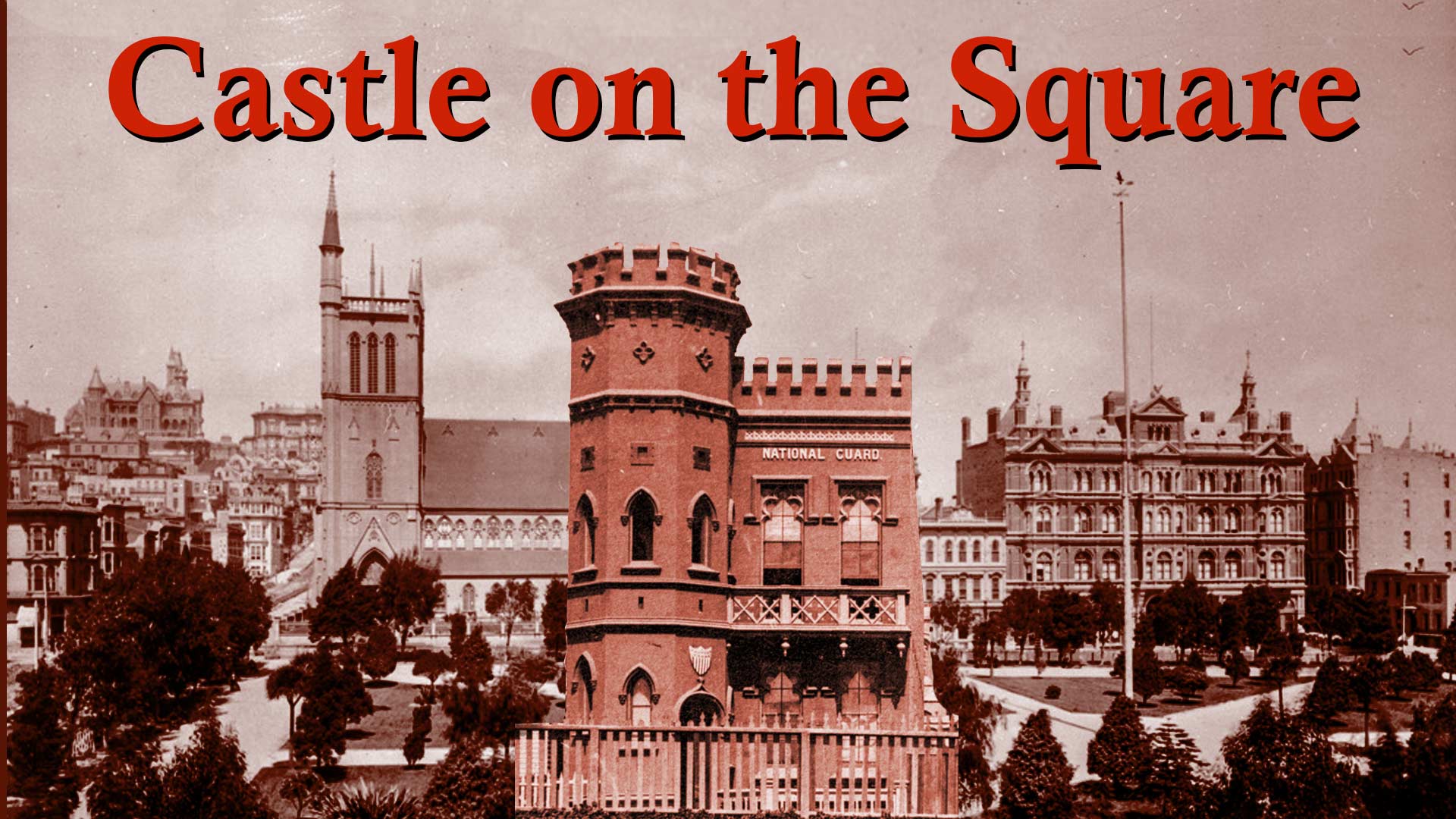
My whole life, Union Square has been the city’s center of department stores, hotels, and luxury brand outlets, so it’s strange to look at old photos and see a time when it was a neighborhood of churches, synagogues, and… a Norman castle?
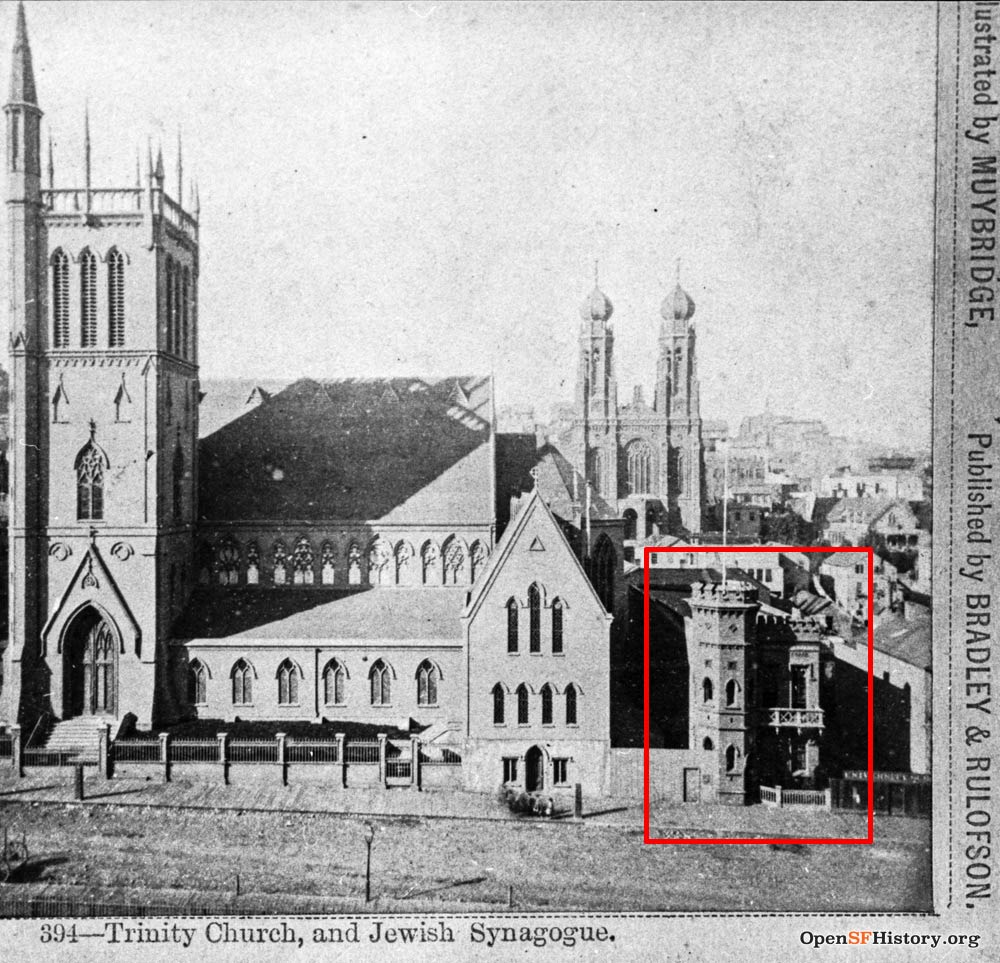
From 1864 to 1893, an odd redoubt facing Union Square on Post Street was the headquarters for one of several militia companies in San Francisco. Despite its menacing castellated facade, it was barely bigger than a modern city home and looked like a chess piece beside Trinity Church next door and Temple Emanu-El a block behind it on Sutter Street. Today, the Tiffany & Co building stands on the site.
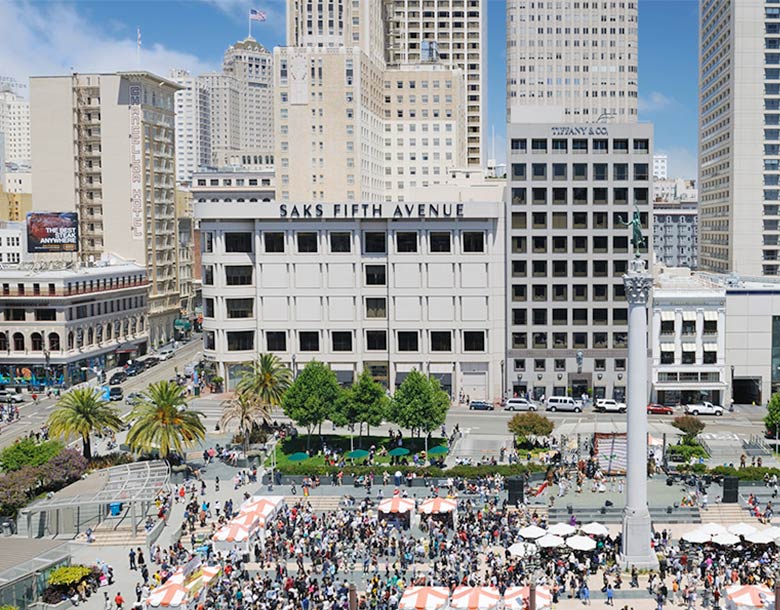
Built in 1864 and known as the National Guard Armory, the building was the home of a volunteer private militia, one of many formed in San Francisco before the state and federal government formalized and professionalized what we know today as the Army National Guard.
The local “Nationals” formed out of a volunteer fire company on Jackson Street in 1850s. They paid for their own uniforms and spent a lot of time drilling, marching in parades, and playing poker in their headquarters.
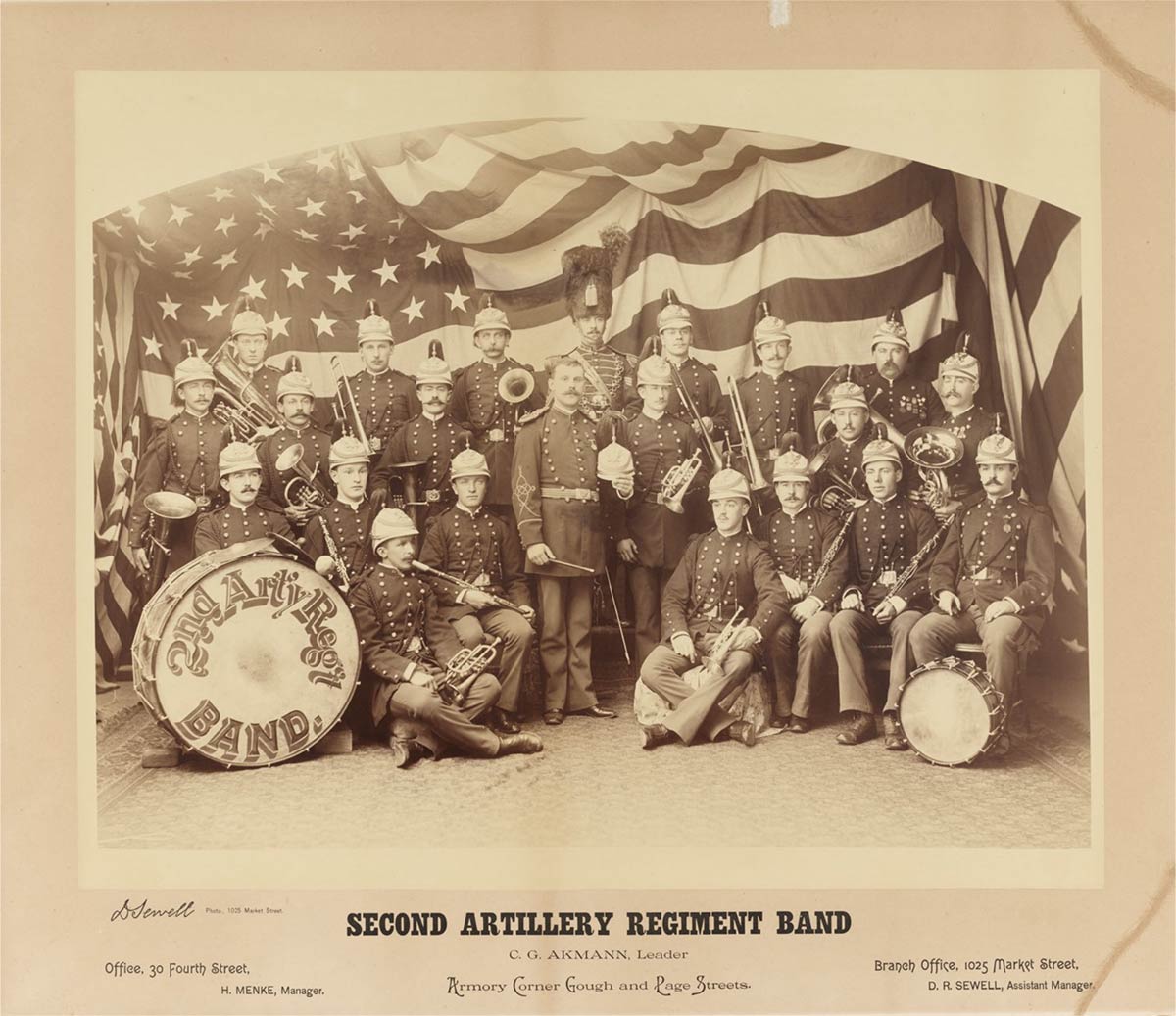
While ostensibly serving as a reserve unit of the California State Militia, the independence of these groups of men who had day jobs—some were leading merchants and holders of political power—meant they couldn’t always be counted upon by the government.
When vigilantes took over the city in 1856, the guard was directed by the governor to assist in putting down the insurrection. The Nationals, seeing how the wind was blowing and overwhelmingly on the side of the Vigilance Committee, prudently and officially dissolved.
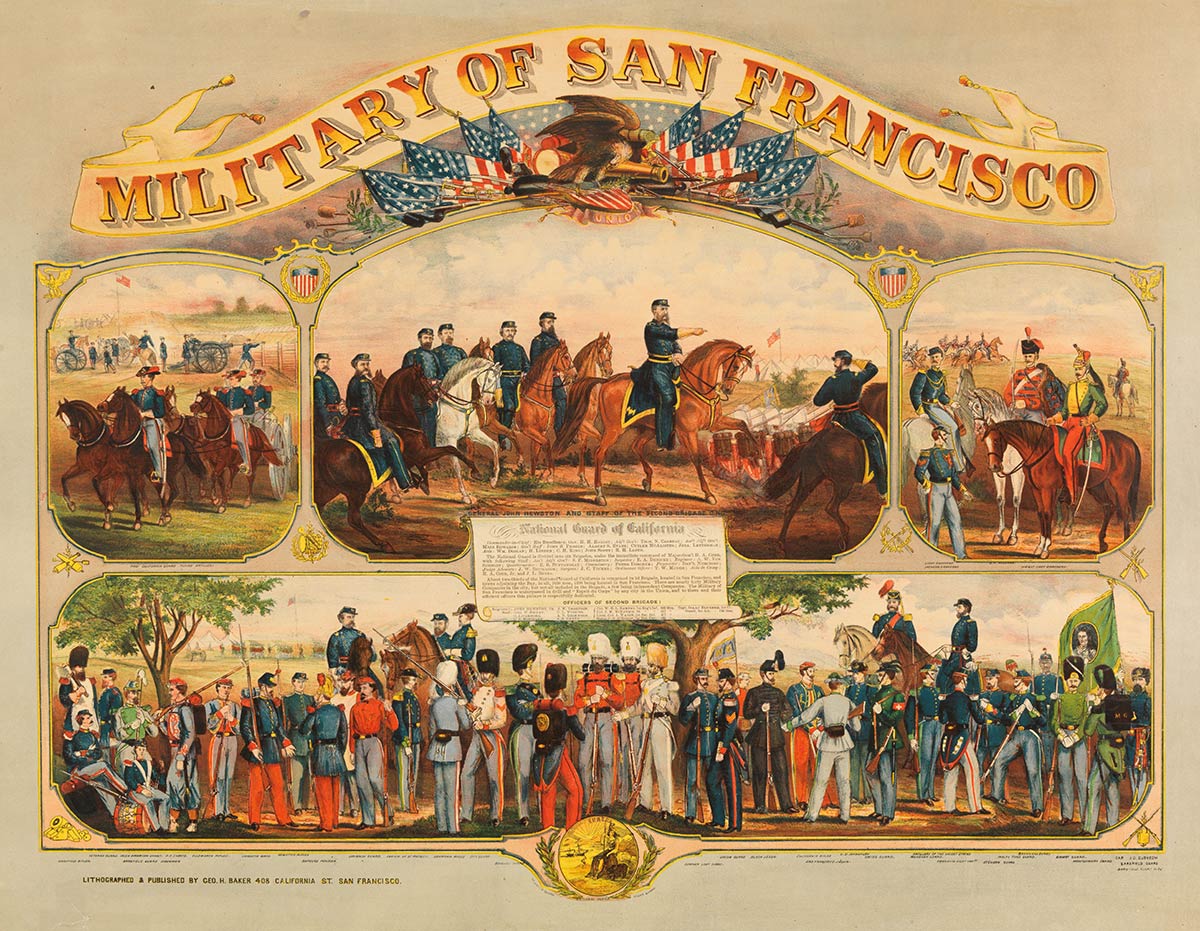
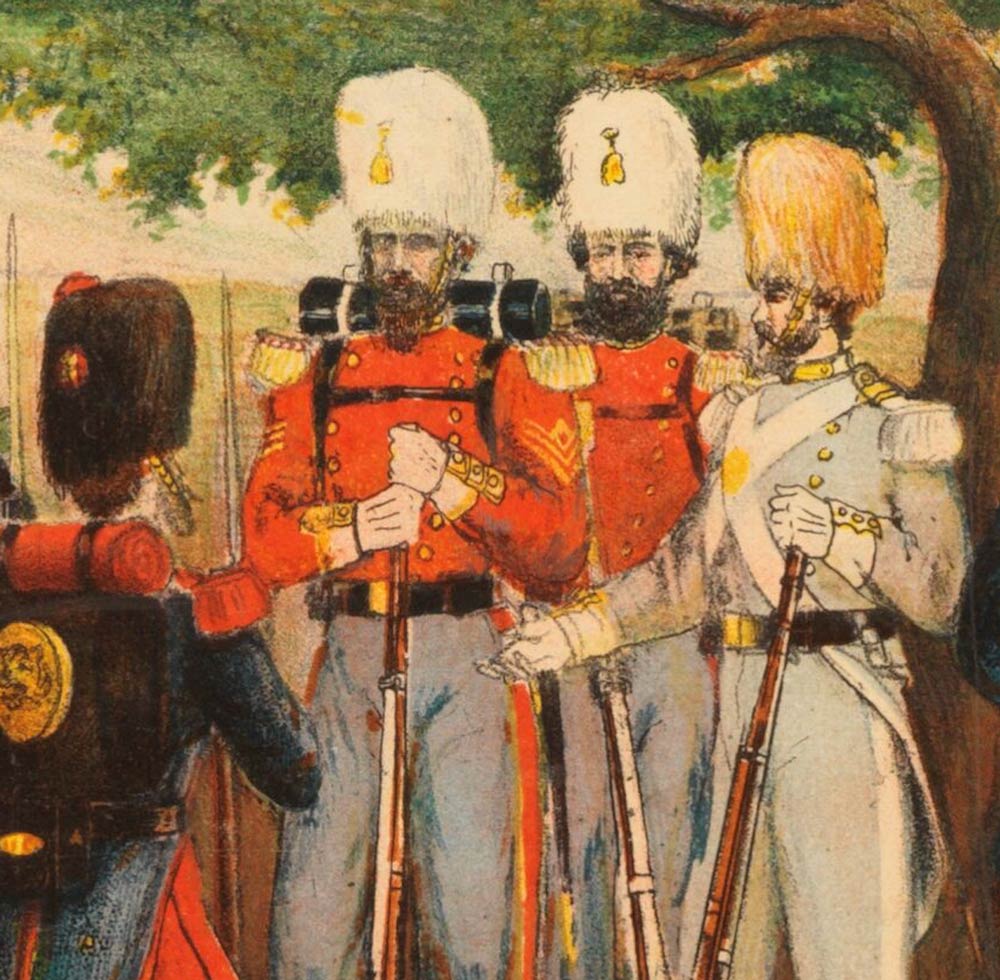
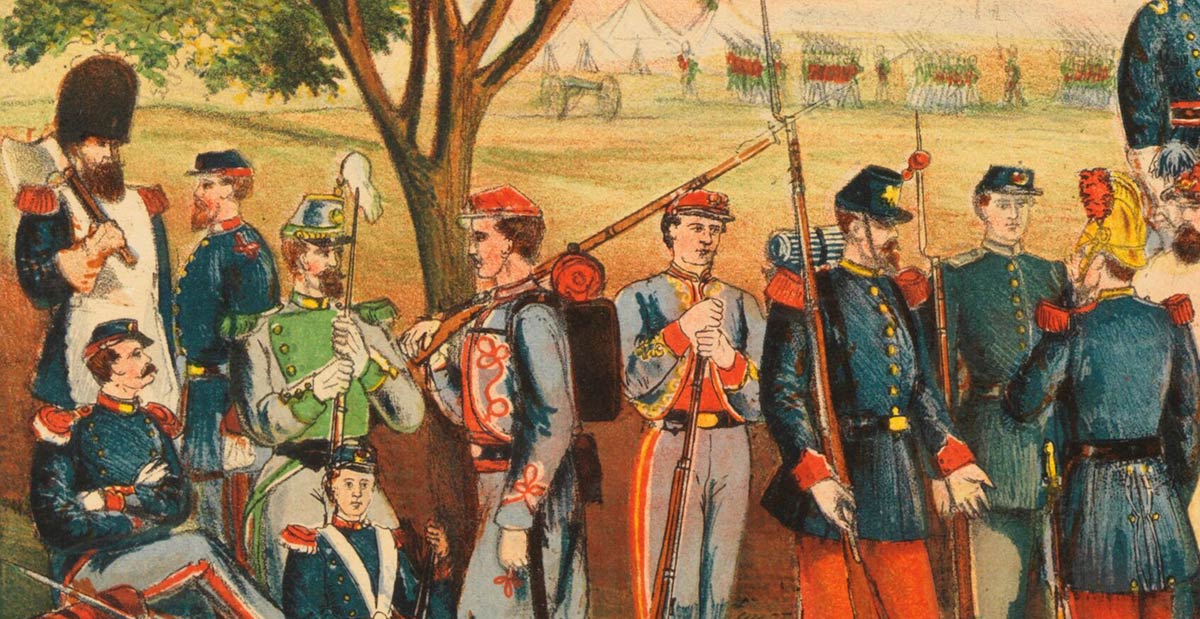
But the Civil War made patriots of many men and gave the dozens of local units a boost in numbers, money, and support. The reformed Nationals purchased a lot on Post Street and raised the money to construct what was thought to be the first solely dedicated headquarters for a San Francisco militia. The building cornerstone was laid on October 8, 1864 and the new armory opened for public inspection the day after Christmas.
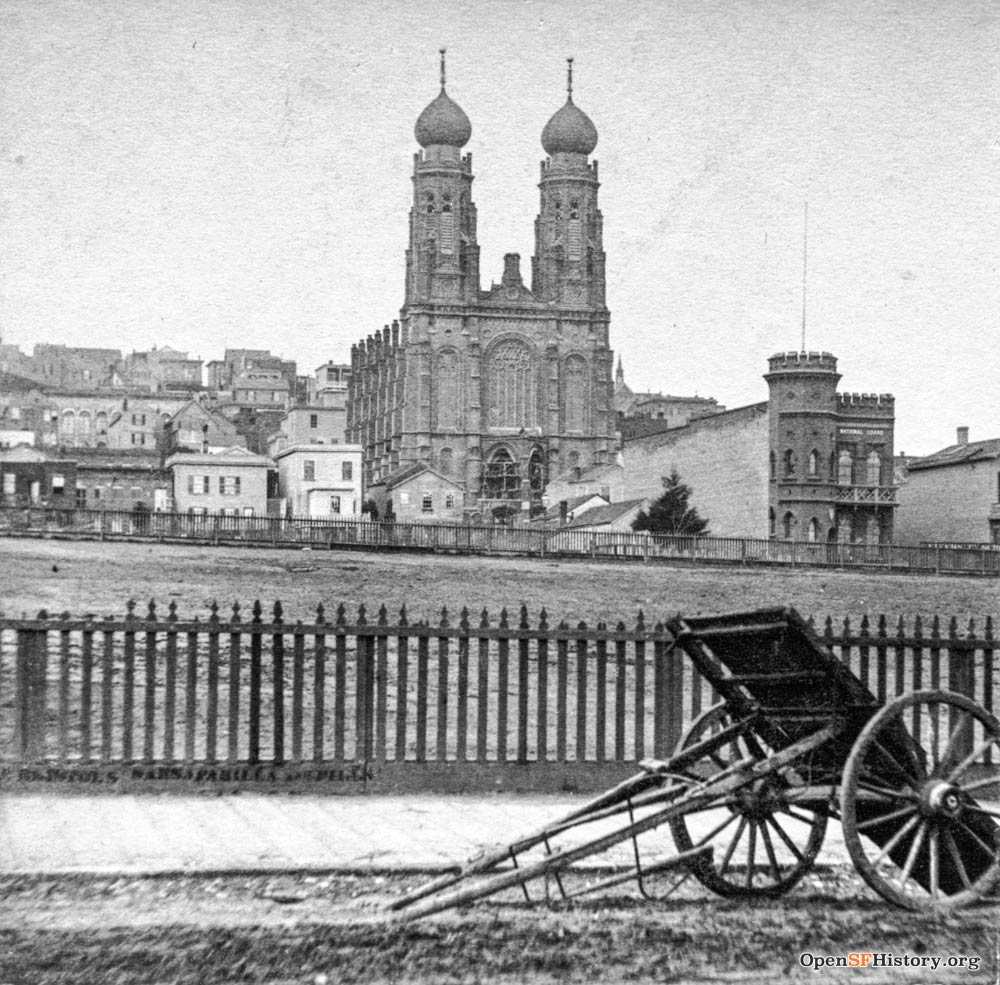
The lot and building cost the Nationals close to $11,000 (about $419,000 in 2023 dollars). Members of the company entered through the octagonal corner tower, which held the dressing rooms, stairs, and washrooms. The rest of the building had militia offices, a 20-foot square committee room (with gun racks), and a 23 x 71-foot open drill room with a 14-foot-high ceiling. The Nationals used the upper level and rented out the ground floor to other companies, political rallies, spiritualist meetings, and weddings.
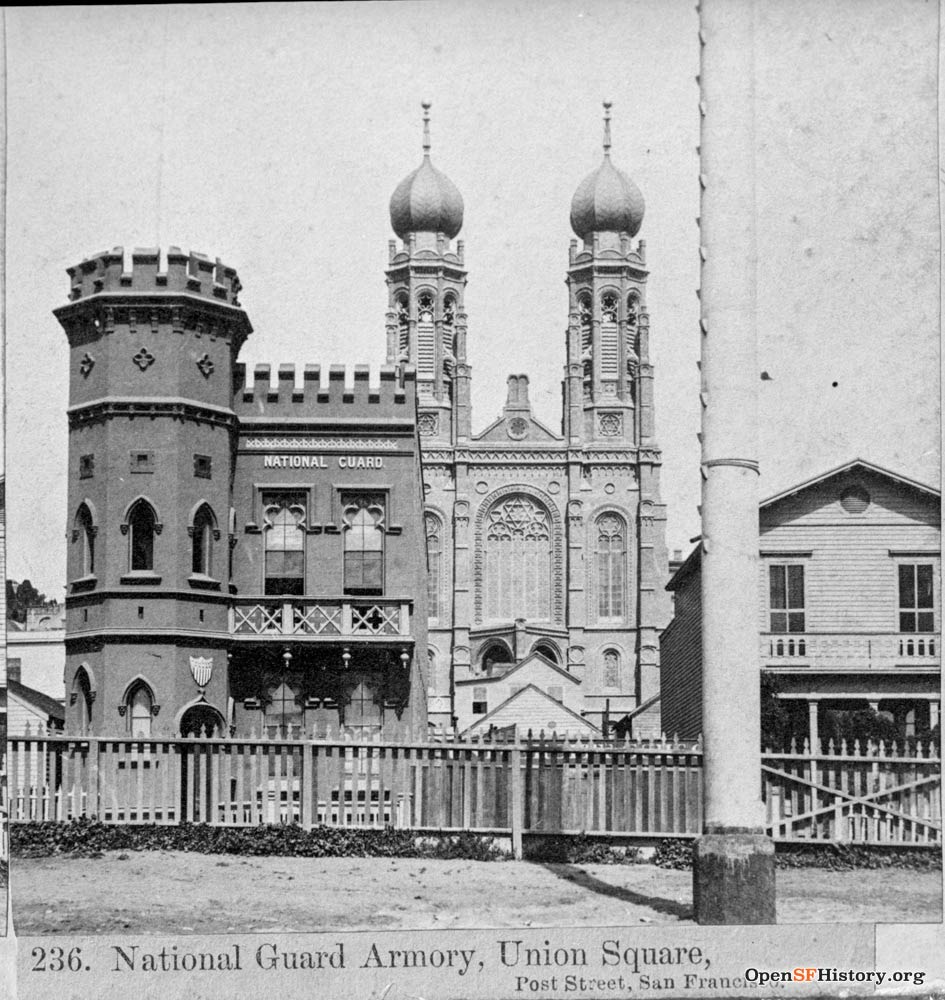
For all their drilling and target practice, the Nationals themselves didn't see much action outside of parades. They were called to Amador County for a miner's strike in 1871. Denis Kearney’s vitriolic anti-Chinese rallies in 1877 put all the city's volunteer militias on alert, mostly to guard their own armories and protect their guns from getting snatched by the workingmen.
By the 1890s, the state of California had imposed control over many of the independent militias and the Nationals officially became Company C and G of the First Regiment of the National Guard of California. But with so many local men of power as alumni, the Nationals still exerted a great deal of independence and built themselves a bigger armory on the 800 block of Ellis Street in 1893.
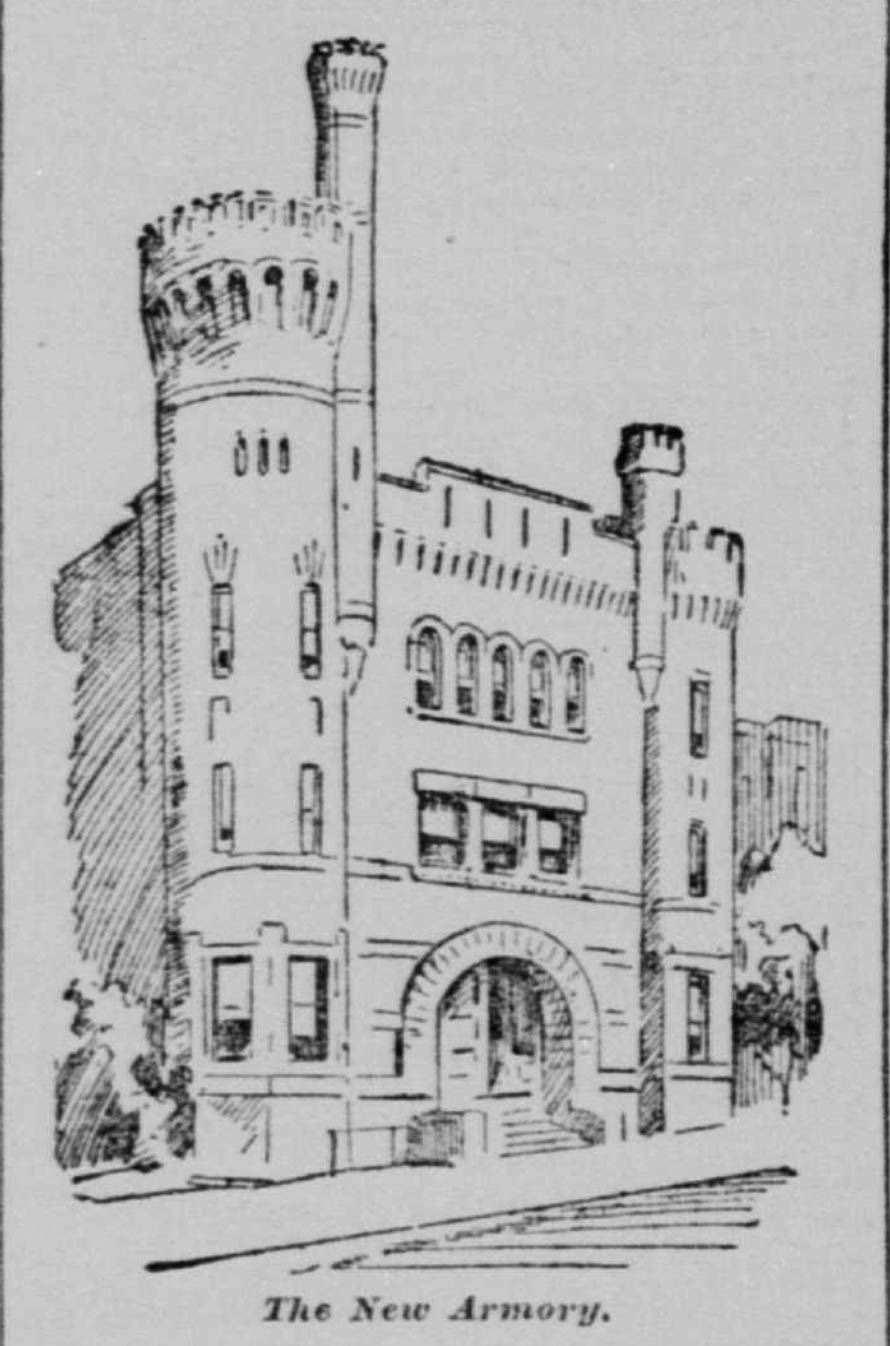
The Ellis Street building also had the look of a castle. Inside was a rifle range and space for drills, but the building served more as a social club and event-rental facility, complete with a bowling alley, smoking rooms, and ladies’ reception parlors.
At the Ellis armory dedication, the colonel of the First Regiment was treated more as a guest than as the companies’ regimental commander. It wasn’t until Congress passed the Militia Act of 1903 that the formerly independent companies were truly brought in line as part of the California Army National Guard.
The old battlements of the Union Square armory on Post Street were quickly torn down after the Ellis Street building opened in 1893. A two-story structure used by a porcelain retailer and later an investment company occupied the site until April 1906, when it and the new Ellis Street armory burned to the ground in the fires following the great San Francisco earthquake.
The 1906 disaster was a time when the National Guard units were really needed. They performed to what kindly historians might call mixed reviews.
In 1914, a massive new National Guard armory was constructed in the Mission District for the Bay Area divisions, regiments, and corps of the California National Guard.
While professionalism and competent training for its occupants certainly was of a higher level, the latest castle also hosted dances, prize fights, and certainly a few poker games before it was decommissioned in 1979.
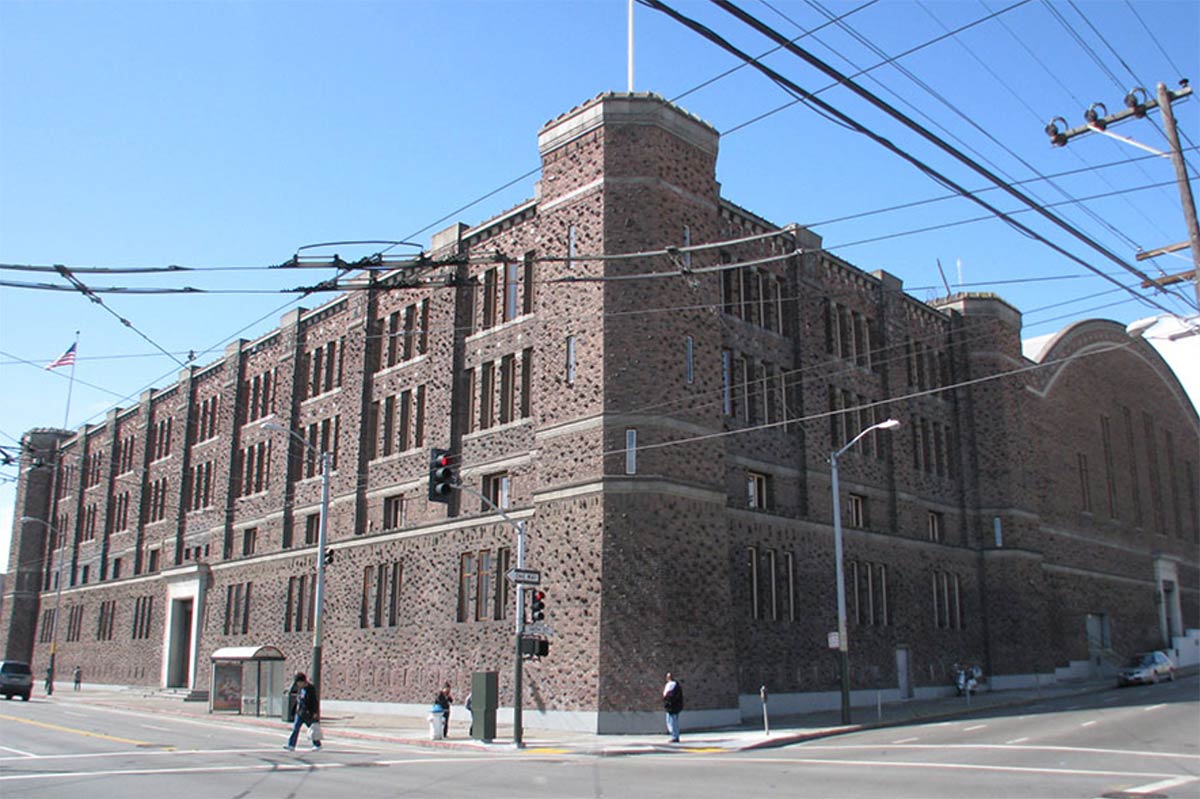
Woody Beer and Coffee Fund
We need more face-to-face chatting and socializing... agreed? Encourage me to buy someone a coffee or beer (maybe you!) by contributing to the not-a-nonprofit Woody Beer and Coffee Fund. Get me out of the house. Let me know when you're free for a sip and some palavering!
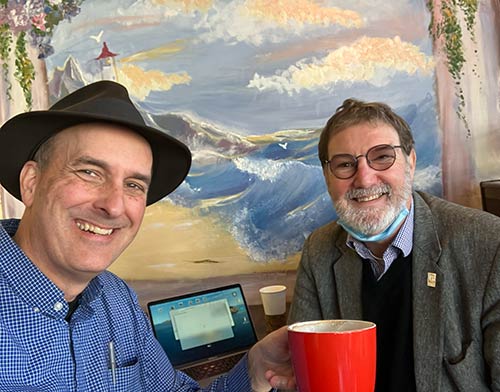
Sources
“National Guard Armory,” Daily Alta California, October 8, 1864, pg. 1.
“Hoisting,” Daily Alta California, November 24, 1864, pg. 1.
“The New National Guard Armory,” Daily Alta California, December 7, 1864, pg. 1.
“National Guard Armory Inauguration,” Daily Alta California, December 26, 1864, pg. 1.
“A New Landmark,” The Morning Call, February 23, 1893, pg. 3.
“Moved at Last,” The Morning Call, June 27, 1893, pg. 8.
California State Military History and Museums Program website, accessed February 11, 2023: https://www.militarymuseum.org/NationalGuardSF.html

